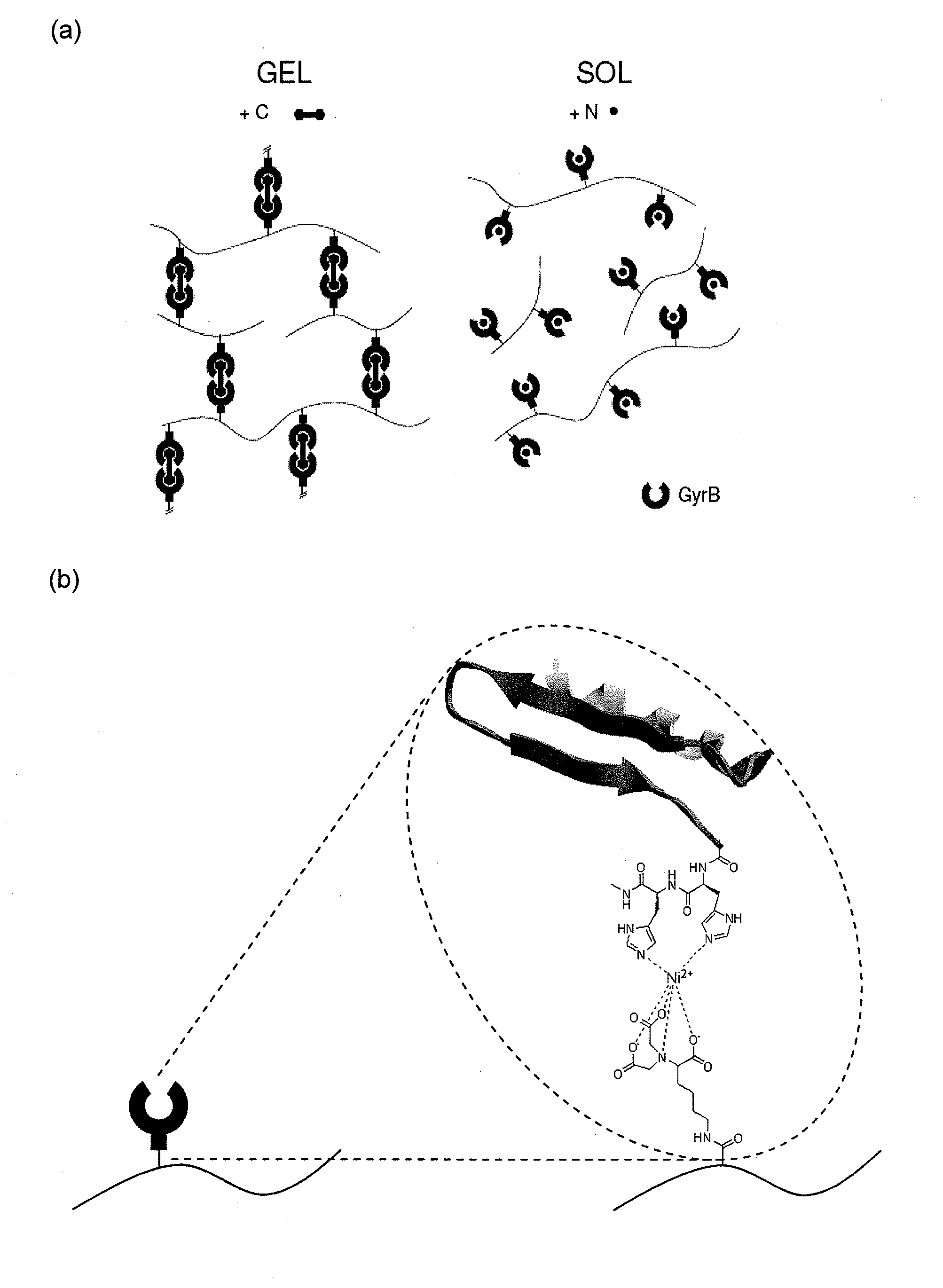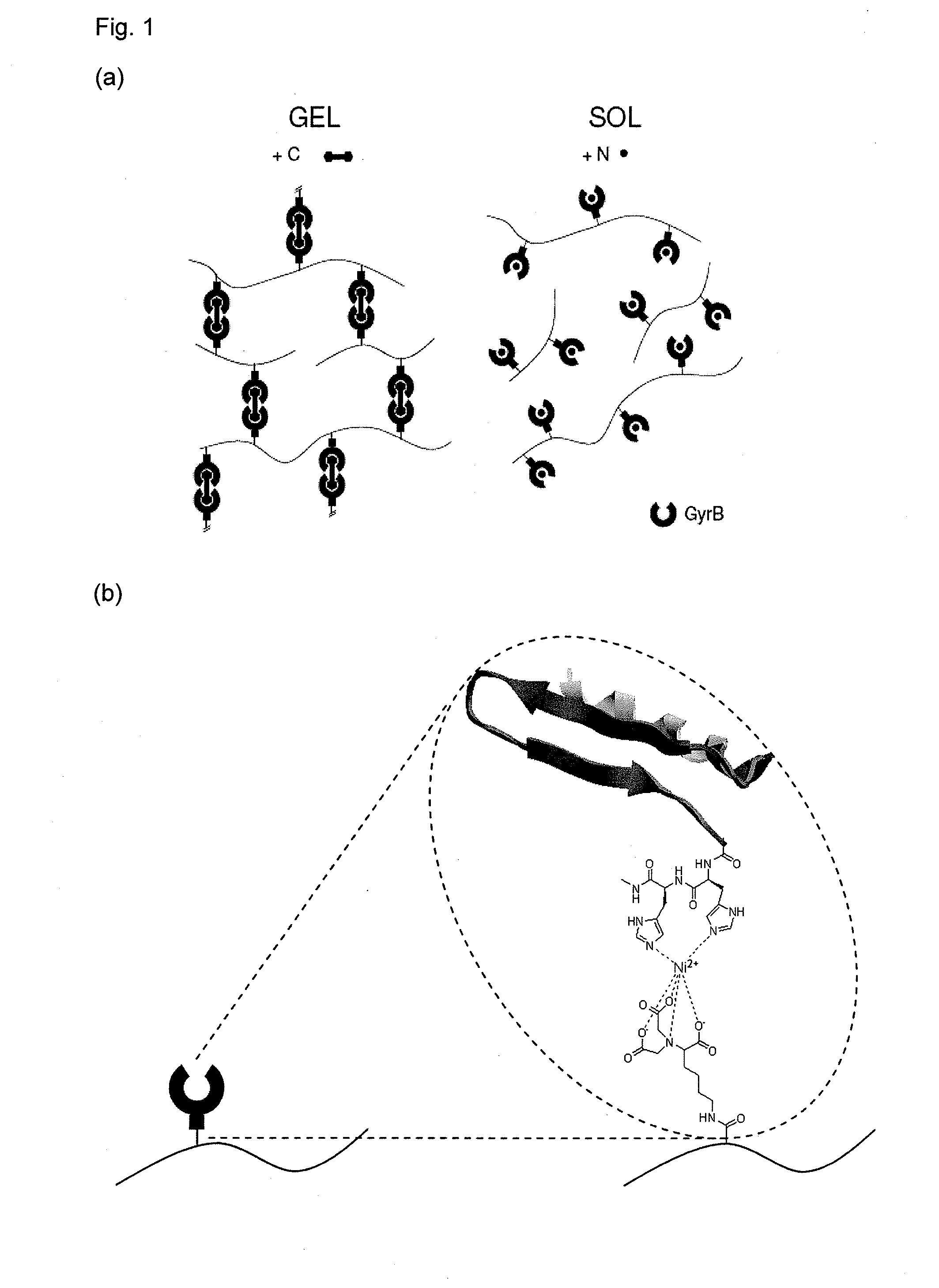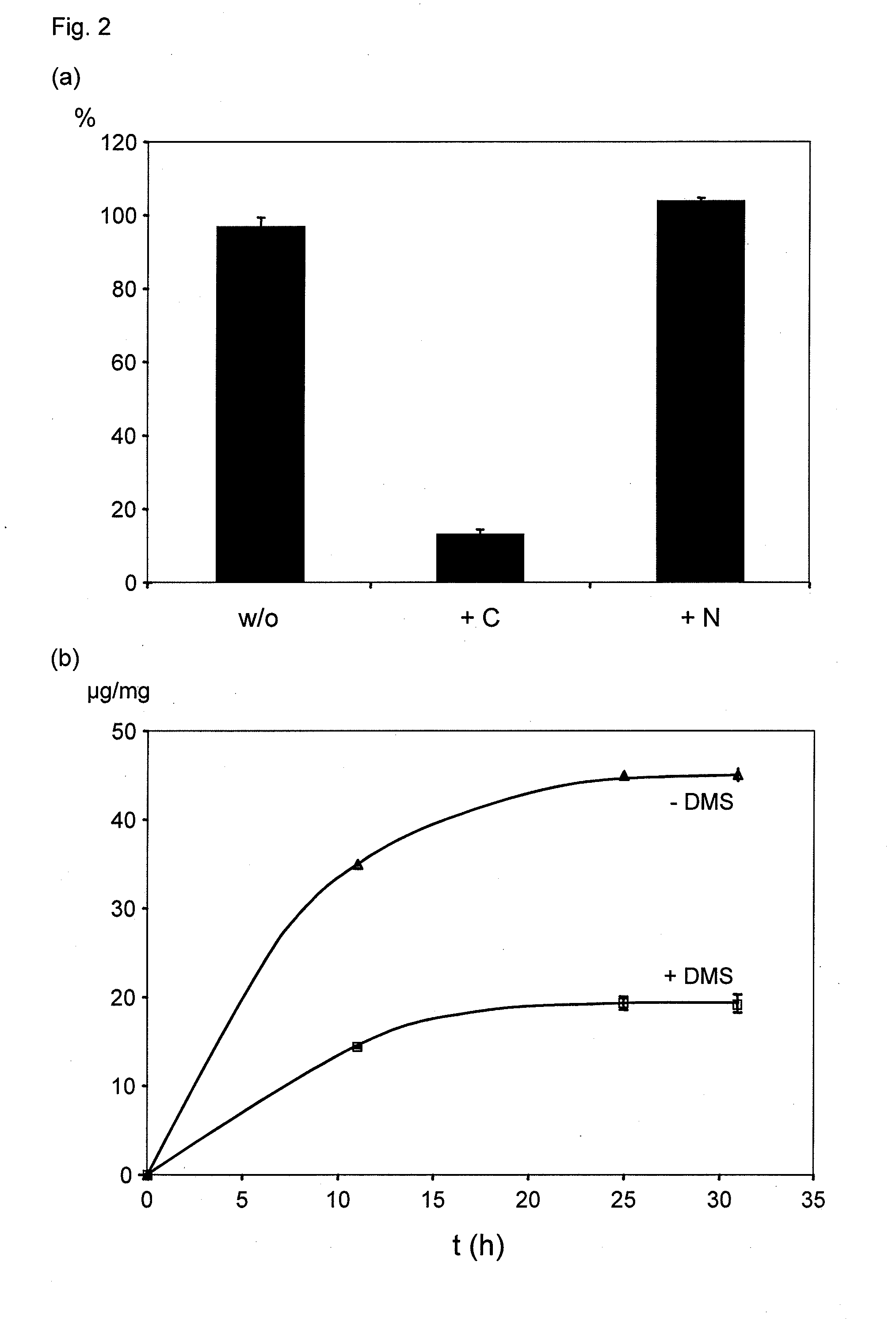Stimuli-responsive hydrogel
- Summary
- Abstract
- Description
- Claims
- Application Information
AI Technical Summary
Benefits of technology
Problems solved by technology
Method used
Image
Examples
example 1
Production of Hexahistidine-Tagged GyrB
[0061]Bacterial gyrase subunit B gene (gyrB) is amplified from E. coli DH5α chromosomal DNA using oligonucleotides OWW866 (5′-ggtacttgcacatatgtcgaattcttatgactcctccagtatc-3′, SEQ ID NO:1) and OWW867 (5′-ccagttacaagcttatggtgatggtgatgatggccttcatagtg-3′, SEQ ID NO:2) and ligated (NdeI / HindIII) into pWW301 (Weber C. C. et al., Biotechnol Bioeng 89, 9-17, 2005) thereby placing gyrB under the control of the phage T7 promoter. pWW873 is transformed into E. coli BL21 START™ (DE3) (Invitrogen, Carlsbad, Calif., cat. no. C601003) and protein production is induced at OD600=1 by 1 mM IPTG for 3 h at 37° C. The cell pellet is resuspended in PBS (40 ml per 1000 ml initial culture volume, 50 mM NaH2PO4, 300 mM NaCl, 10 mM imidazole, pH 8.0), disrupted using a French press (Thermo Fisher Scientific, Waltham, Mass.), and cell debris are eliminated by centrifugation at 15,000×g for 20 min. The cleared cell lysate is loaded onto an NTA-agarose Superflow column (Qi...
example 2
Production of VEGF121
[0062]The expression vector pRSET-VEGF121 (Ehrbar M. et al., Circ Res 94, 1124-32, 2004) for hexahistidine-tagged human vascular endothelial growth factor 121 (VEGF121) is transformed in E. coli BL21 START™ (DE3), and protein production is induced at OD600=0.8 by addition of 1 mM IPTG for 4 h at 37° C. The cell pellet is resuspended in 50 mM Tris / HCl, 2 mM EDTA, pH 8.0 (100 ml per 1000 ml initial culture volume), the cells are disrupted using a French press and the inclusion bodies are pelleted by centrifugation at 15′000×g for 20 min at 4° C. Inclusion bodies are dissolved over night at 4° C. in 6 M urea, 500 mM NaCl, 5 mM imidazole, 20 mM Tris / HCl, pH 7.9 and separated from the cell debris by centrifugation (15′000×g, 30 min, 4° C.). The supernatant is loaded onto an NTA-agarose Superflow column following washing (15 column volumes 6 M urea, 500 mM NaCl, 20 mM imidazole, 20 mM Tris / HCl, pH 7.9) and elution (6 M urea, 500 mM NaCl, 250 mM imidazole, 20 mM Tris / ...
example 3
Characterization of GyrB
[0063]Concentration of GyrB is analyzed by the Bradford method (Biorad, Muünchen, Germany, cat. no. 500-0006) using BSA as standard. For SDS-PAGE analysis, 12% reducing gels are used with subsequent Coomassie staining. Antibiotic-triggered dimerization of GyrB is analyzed by incubating GyrB in the presence coumermycin A1 (GyrB:coumermycin=2:1, mol / mol; Sigma, St. Louis, Mo., cat. no. C9270) for 30 min at room temperature following covalent crosslinking of the dimers by addition of dimethyl suberimidate×2HCl (DMS, SigmaAldrich, St. Louis, Mo., cat. no. 179523) at a 10-fold molar excess with respect to GyrB for 60 min at room temperature. The dimers are analyzed on SDS-PAGE. For ultrafiltration studies of the coumermycin-induced dimerization, 100 nmol GyrB in 1 ml PBS are incubated with or without 50 nmol coumermycin for 30 min at room temperature. Following addition of 4 ml PBS, the solution is subjected to ultrafiltration (50 kDa MW cut-off, Filtron, Northbor...
PUM
| Property | Measurement | Unit |
|---|---|---|
| Solubility (mass) | aaaaa | aaaaa |
Abstract
Description
Claims
Application Information
 Login to view more
Login to view more - R&D Engineer
- R&D Manager
- IP Professional
- Industry Leading Data Capabilities
- Powerful AI technology
- Patent DNA Extraction
Browse by: Latest US Patents, China's latest patents, Technical Efficacy Thesaurus, Application Domain, Technology Topic.
© 2024 PatSnap. All rights reserved.Legal|Privacy policy|Modern Slavery Act Transparency Statement|Sitemap



